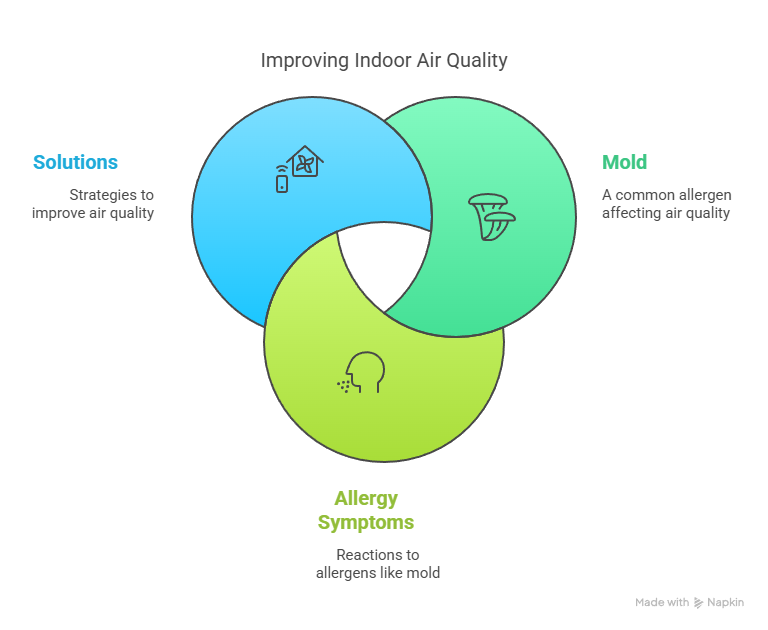Improving Indoor Air Quality: The Link Between Mold and Allergies
- Colin Emmons
- May 27
- 2 min read

If you or a family member suffer from persistent allergy symptoms at home—like sneezing, congestion, or itchy eyes—poor indoor air quality may be the culprit. One of the most common (and overlooked) triggers? Mold.
Mold spores can easily become airborne and circulate throughout your home, aggravating allergies and contributing to chronic health issues. Understanding the connection between mold and allergies is the first step in improving the air you breathe and creating a healthier living environment.
How Mold Affects Indoor Air Quality
Mold reproduces by releasing microscopic spores into the air. In small amounts, these spores are usually harmless. But in enclosed or poorly ventilated spaces—especially homes with excess moisture or humidity—spore levels can rise, negatively impacting indoor air quality.
Once airborne, mold spores can:
Irritate the respiratory system
Trigger allergy symptoms
Aggravate asthma or sinus issues
Cause fatigue, headaches, and brain fog in sensitive individuals
Common Allergy Symptoms Linked to Mold
If you’re experiencing ongoing allergy symptoms only while at home, mold could be to blame. Signs include:
Sneezing, coughing, or wheezing
Nasal congestion or sinus pressure
Itchy, watery eyes
Skin irritation or rashes
Increased asthma attacks
These symptoms are often mistaken for seasonal allergies or colds—but if they persist year-round or improve when you leave the house, indoor mold may be the root cause.
Where Mold Hides in Your Home
Mold thrives in damp, dark areas. Common problem spots include:
Basements and crawl spaces
Bathrooms and around tubs/showers
Kitchens and under sinks
Around windows or HVAC vents
Behind walls or under flooring after leaks
Even if mold isn’t visible, it can still be present and affecting the air you breathe.
Steps to Improve Air Quality and Reduce Mold Allergies
Identify and Fix Moisture SourcesRepair leaks, improve ventilation, and use dehumidifiers to keep humidity below 50%.
Inspect for MoldLook for visible signs, musty odors, or hire a professional for an in-depth inspection.
Consider Air TestingMold air quality tests can help confirm the presence and type of airborne mold spores.
Use HEPA Air PurifiersThese filters can help capture mold spores and other allergens from circulating air.
Clean with Mold-Resistant ProductsUse non-toxic cleaners designed to prevent mold growth, especially in damp areas.
Professional RemediationIf mold is found, professional remediation ensures safe removal and prevention of recurrence.
Final Thoughts
Mold and allergies are closely connected—and ignoring the signs can mean prolonged symptoms and unnecessary health risks. By improving your indoor air quality and addressing potential mold issues, you can create a safer, more comfortable space for your family.
At Above All Mold Removal, we specialize in mold inspection, remediation, and air quality improvement across Massachusetts. If you’re struggling with allergies and suspect mold might be the cause, contact us today for a consultation or indoor air quality test.




Comments